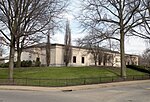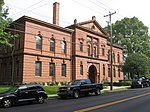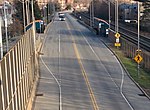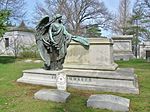Killer Heels
Killer Heals (Killer Heels: The Art of the High-Heeled Shoe) was a blockbuster exhibition that ran at the Brooklyn Museum from September 10, 2014 – March 1, 2015.The exhibition displayed high-heeled footwear, for men and women, as art objects. The New York Times called the exhibition, "mesmerizing, disturbing but undeniably consummate." The Museum extended the extremely popular show an additional 2 weeks beyond the scheduled closing date.The curator was Lisa Small, who also edited a well-received illustrated book on the topic, "Killer Heels: The Art of the High-Heeled Shoe. Photographer Steven Klein collaborated on the exhibit.Killer Heels was also presented later at: Albuquerque Museum of Art and History in 2015, Frick Art & Historical Center in Pittsburgh in 2016, Currier Museum of Art in New Hampshire.
Excerpt from the Wikipedia article Killer Heels (License: CC BY-SA 3.0, Authors).Killer Heels
Reynolds Street, Pittsburgh
Geographical coordinates (GPS) Address Website Nearby Places Show on map
Geographical coordinates (GPS)
| Latitude | Longitude |
|---|---|
| N 40.446513 ° | E -79.902329 ° |
Address
Frick Art and Historical Center
Reynolds Street 7227
15208 Pittsburgh
Pennsylvania, United States
Open on Google Maps











